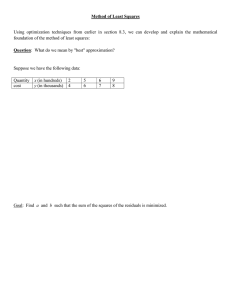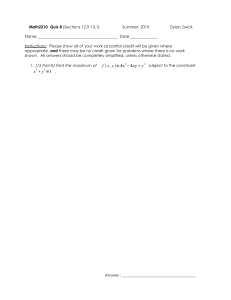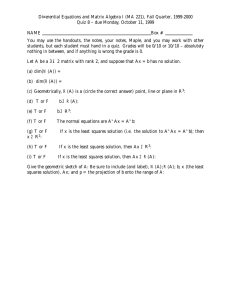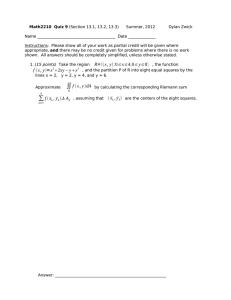CHAPTER I INTRODUCTION 1.1
advertisement
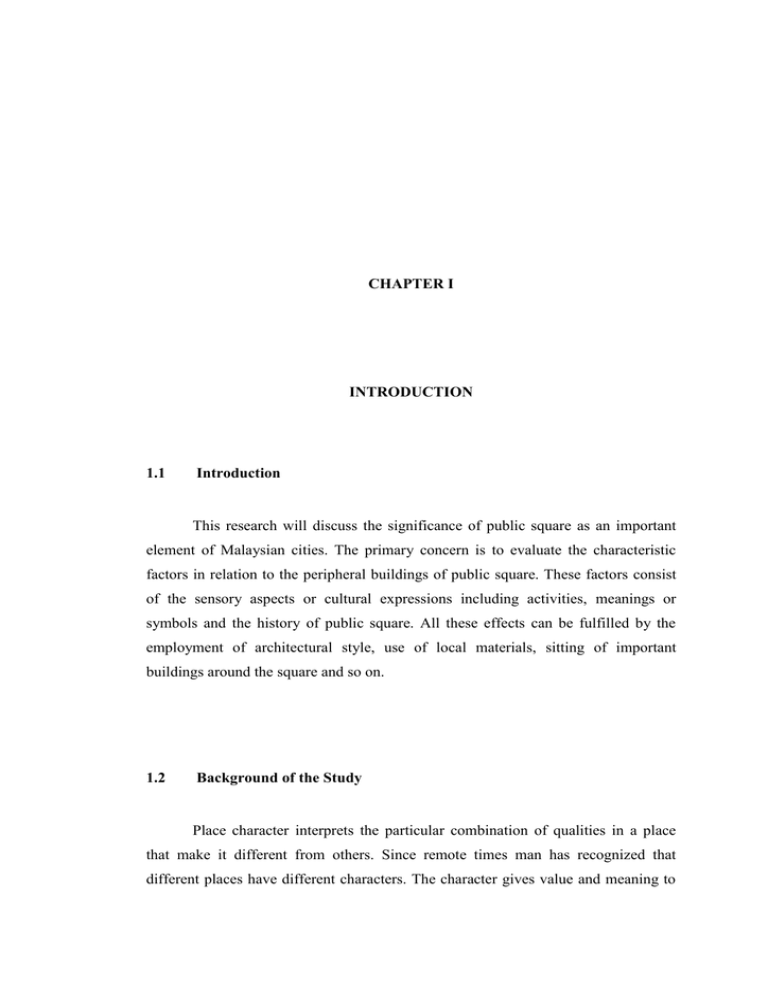
CHAPTER I INTRODUCTION 1.1 Introduction This research will discuss the significance of public square as an important element of Malaysian cities. The primary concern is to evaluate the characteristic factors in relation to the peripheral buildings of public square. These factors consist of the sensory aspects or cultural expressions including activities, meanings or symbols and the history of public square. All these effects can be fulfilled by the employment of architectural style, use of local materials, sitting of important buildings around the square and so on. 1.2 Background of the Study Place character interprets the particular combination of qualities in a place that make it different from others. Since remote times man has recognized that different places have different characters. The character gives value and meaning to 2 inhabitants and without that their quality of life would be diminished. This character is often so strong that it, in fact, determines the basic properties of the environmental images of most people present, making them feel that they experience and belong to the same place (Norberg Schulz, 1980). Observers believe that the character of a place consists of both the concrete substance of shape, texture and colour and the more intangible cultural associations a certain patina given by human use over time. This phenomenon arises from the need for people, as cultural beings, to have a stable system of places to depend on, thereby providing emotional attachment and identity with place. The analogy on a personal level is one‟s own home environment. The universal nature of this dependence on the qualities of a particular space places a very real onus on the urban designer „to create truly unique contextual places‟ and to „explore the local history, the feelings and the needs of the populace, the traditions of craftsmanship and indigenous materials, and the political and economic realities of the community‟ (Trancik, 1968). Public squares create a gathering place for the people, humanizing them by mutual contact, providing them with a shelter against the accidental traffic and freeing them from the tension of rushing through the web of streets. In fact the square represents a psychological parking place within the civic landscape. If one visualizes the streets as rivers, channelling the stream of human communication, then the square represents a natural or artificial lake. The square dictates the stream of life not only within its own boundaries but also through the adjacent streets for which it forms an entrance of the square (Paul Zucker, 1959). Camillo Sitte has mentioned some prominent principles to endow character to public squares in his book "City Planning According to Artistic Principles". Some of these principles are implied here: i. The centre of public squares should be kept free of clutter. ii. Public squares should be enclosed entities. 3 iii. The size and shape of public squares are critical. iv. Irregularity is acceptable in the configuration of a public square, and does not necessarily negate visual order. v. A continuum of interlinked social spaces enhances the parts as well as the whole. vi. The ideal street should form a completely enclosed unit visually. (Camillo Sitte, 1889) 1.3 Problem Statement As the most important public squares like Stadthuys Square are located at the historic and traditional parts of the city with almost old age, they were all designated as walkable areas but modern vehicles entered to them over time and dilapidated the square main character; peripheral buildings can help the square to give back their main character. Since the core public squares founded as a political or religious arena, they are encompassed by historic mono-functional buildings; there must be new adaptive reuse strategies to attract and include different ranges of people with different backgrounds. 1.4 Aim of Study This study aims to figure out the stereometric characteristic attributes of Stadthuys Square that establish the genius loci of the study area and exploring the role of peripheral buildings in relation to these attributes. 4 1.5 Research Questions The key research questions for this study are: i. How building functions can affect on public square activities? ii. What is the effect of active and inactive frontage on public square character? iii. How peripheral buildings can promote safety of the square? iv. How the dominant buildings of public square can influence the square character? 1.6 Scope of the Study Since the research case study is located in Malaysia, there are a lot of limitations that constrain the research process such as the tropical and humid climate and distinctive cultural values and traditions of Malaysia. The location of study area in the core heritage zone of Melaka makes it distinctive in compare of other Malaysian public squares. 5 1.7 Research Methodology In this study, the methods of collecting the required data is divided into two parts; “primary data” such as face to face interview with residents and local people of the study area, distribution of questionnaire among people and observation; “Secondary data” such as literature review and documentary analysis. The survey was distributed to 150 residents consisting of pedestrians who lingering and passing the Stadthuys Square and its vicinity. The process of survey fulfilment as well as the questionnaires distribution performed at three days in the morning, afternoon, evening and night which included two week days and one weekend day. An outline of the research methodology is shown in figure 1.1. Figure 1.1: Research Methodology and Design Hierarchy 6 Figure 1.2: Diagram of Research Methodology and Design 7 1.7.1 Research Instruments The researcher applied quantitative and qualitative methods in order to collect the data. The quantitative data came from the questionnaire. On the other hand, the observation and interview was utilized to gather the qualitative data. In additions to these three approaches the researcher used the camera in order to capture physical setting and the people behaviour at certain time in Stadthuys Square in Melaka. 1.7.2 Data Analysis The data of this study were analysed by applying the quantitative and qualitative analysis. Triangulation (a method used by qualitative researchers to determine and establish validity in their studies by analysing a research question from multiple perspectives) was used in this study to analyse the data from the questionnaire, interview and observation. The gained statistics were applied to answer the research questions in addition to the qualitative analysis as well. To describe the data in the accurate way from each variable, we utilized the descriptive statistical process. Cross tabulations from the survey and photos from observation techniques were applied for analysing the data and to compare the results and find the correlation among variables which were chosen based on literature review. 1.8 Limitation and Delimitation of the Study The major factors that could be a limitation to the accuracy of the research are as the following: i. The number of questionnaire sets will depends on number of those who are willing to participate. 8 ii. The information and storybook references and report. iii. The survey is documented in the vicinity of the study area. iv. The survey is limited to one public square of Melaka. v. The survey is limited to the role of peripheral buildings in relation to the square character. 1.9 Significance of the Study As public squares are the main core component of most historic cities foundation; they are the main heart of city activities. If their main character is being deteriorated, all the city activities will be threatened. Hence public squares have a great role on the activities vitality taking place around them and the extended city. In a nutshell these civic environments need robust and adaptive reuse to save their sustainability that causes city durability. 1.10 Expected Results of the Study The expected outcomes of this study are that the implementation of the proposal will promote the vitality of the Stadthuys Square with the aid of new uses and activities that can inspire new characteristic attributes to the square and change the monotonous ambience of the current environment. Active frontages can absorb diversity of visitors to the square and raise the safety of the square at night by infusing the sense of eye on the square. 9 1.11 Study Area Figure 1.3 shows the map of Stadthuys Square and its peripheral buildings located at the core area of Melaka. Figure 1.3: Stadthuys Square in Melaka
